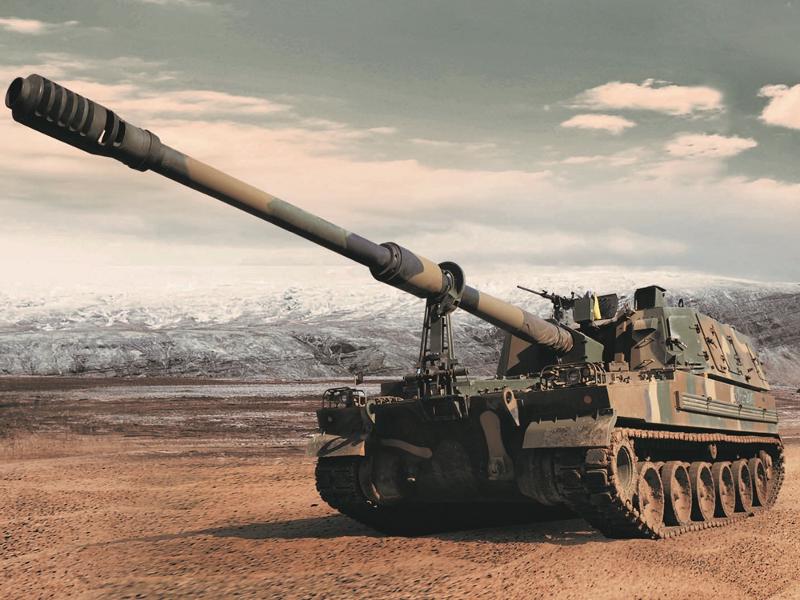
The government’s decisions to shrink or cancel previous choices on the acquisition of armour may well be appropriate to Australia’s changing strategic circumstances.
Fast, agile, easily deployable and long range, armour is not.
But there is potentially a significant strategic casualty from the decisions that followed the defence strategic review: Australia’s defence reputation with a key regional partner, the Republic of Korea. It’s possible, too, that an opportunity to develop a significant defence industrial base and export opportunity in southern Australia has been lost.
It’s not been easy or straightforward to give substance to Australia’s proclaimed objective of a closer defence relationship with Korea. Despite much rhetoric, neither government has put priority or substance behind repeated political proclamations.
In 2012, the outgoing Australian Labor government cancelled a plan to build in Australia 30 K9 self-propelled howitzers (SPHs) and associated ammunition support and recovery vehicles. Samsung Techwin (now Hanwha Defense) and Raytheon had tendered for the project but the cancellation came before a contract was signed. This was to be Australia’s first major defence acquisition from an Asian country, worth around A$1 billion.
Its abrupt cancellation was badly received by Korea, which saw Australia as an unreliable partner. In a country where long term trusted relationships define the business culture, this was a particularly damaging decision.
But Korea is not, in the end, anything but practical and pragmatic—and mercantilist, so the revival of the contract by the Morrison government in 2019 was welcome, if not effusively received, in Korea. In the intervening period, Korea’s main naval shipyard, DSME, had shortlisted for construction of two projected Australian naval supply ships. The contract was in due course won by Navantia of Spain, and the decision, surprisingly, created little attention or unhappiness in Seoul. Korea had moved on—it had plenty of alternative defence customers emerging as the scale and quality of its order books expanded.
Hanwha committed to build the howitzers in a new purpose-built factory at Avalon, near Geelong. The company saw this as a bridgehead, an entry point into Australia’s defence capability acquisition chain. Geelong was suffering high levels of skilled unemployment after the closure of the Ford vehicle manufacturing plant there, a resource Hanwha—already conscious of the politics—decided it could draw upon.
It began, too slowly and under pressure, to explore the capabilities of Australian companies that could be utilised, and indeed those that might offer innovative products that could be utilised in the global Hanwha defence production supply chain. It also slowly began to build its understanding of and links to Australia’s complex and changing defence procurement system.
Separately, Hanwa saw a massive opportunity in the Land 400 Phase 3, the intended replacement of the ADF’s obsolete tracked infantry fighting vehicle (IFV) capability. The Vietnam-era M113s were to be replaced with 450 state of the art IFVs.
In response, Hanwha developed the prototype AS21 Redback, an IFV design optimised for Australian requirements. It was selected as a bidder for the contract along with Germany’s Rheinmetall Lynx IFV. Both companies subsequently sent prototypes to Australia for evaluation and field testing.
Finalisation of the contract has been delayed several times as Defence has pressured the two bidders to reduce prices, and more recently, to bid against a reduced number of vehicles, as the likely outcome of the DSR came into view. In short, the project has become yet another delayed, amended and yet further delayed program, an outcome by now typical of Australia’s convoluted defence procurement processes.
And then the Ukraine war happened which, on one reading, might have revived views on the need for a substantial ADF armoured capability. But Australia’s needs and likely contingencies are different, and it is difficult to argue with the DSR’s emphasis on agility, mobility, range and regional reach.
For Korea’s defence industry, however, the Ukraine war is a game changer. Although, much to the chagrin of the United States, Korea’s defence industry has been a massive beneficiary, securing very large new armour contracts with Poland, in particular, Romania and others. Korea’s combination of speed of delivery, quality and state of the art technology has catapulted it into the front ranks of global weapons suppliers.
In Europe, Korea has also benefitted from judgements that Germany’s production capability will be fully extended by the needs both to rebuild the German armed forces and to supply Ukraine or partners sending equipment to Ukraine. An indication of this is Rheinmetall’s apparent decision to contract its Australian subsidiary in Queensland to build Boxer eight-wheeled armoured vehicles for the Bundeswehr, alongside those being built for the Australian Army.
Of an original 450 IFVs proposed to be acquired by Australia, the government, post DSR, has reduced this number to 129. It will be marginal for either Rheinmetall or Hanwha to build such a short production run in Australia, although arguably there may be export opportunities if Australian costs are competitive. Whichever company wins the contract, it’s equally likely they’ fill it from much bigger production runs in Europe or Korea.
For Hanwha, the cancellation of a second tranche of SPHs is a further blow to its plans to build a significant manufacturing base at Avalon near Geelong and could negatively impact any decision on production in Australia of the Redback, should it be the successful tenderer.
Faced with the strategic uncertainties in its immediate neighbourhood, Korea sees value in diversifying its production base away from the Korean peninsula. But it may wonder whether Australia presents a reliable and attractive location. The upshot is that southern Australia could miss out on a new defence production base, with all the associated benefits for employment and Australian subcontractors. That result would be at odds with the grander objectives of the DSR.

